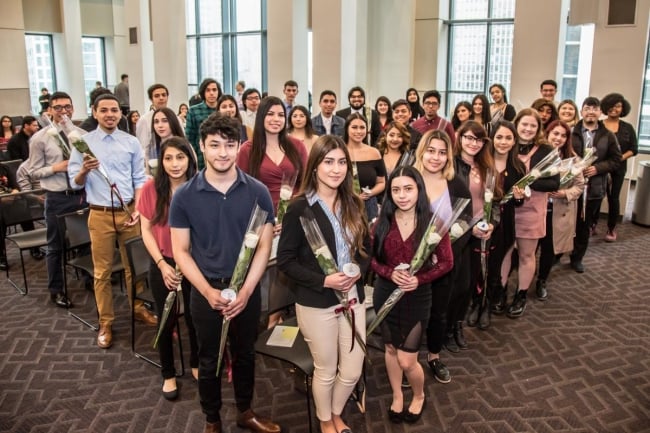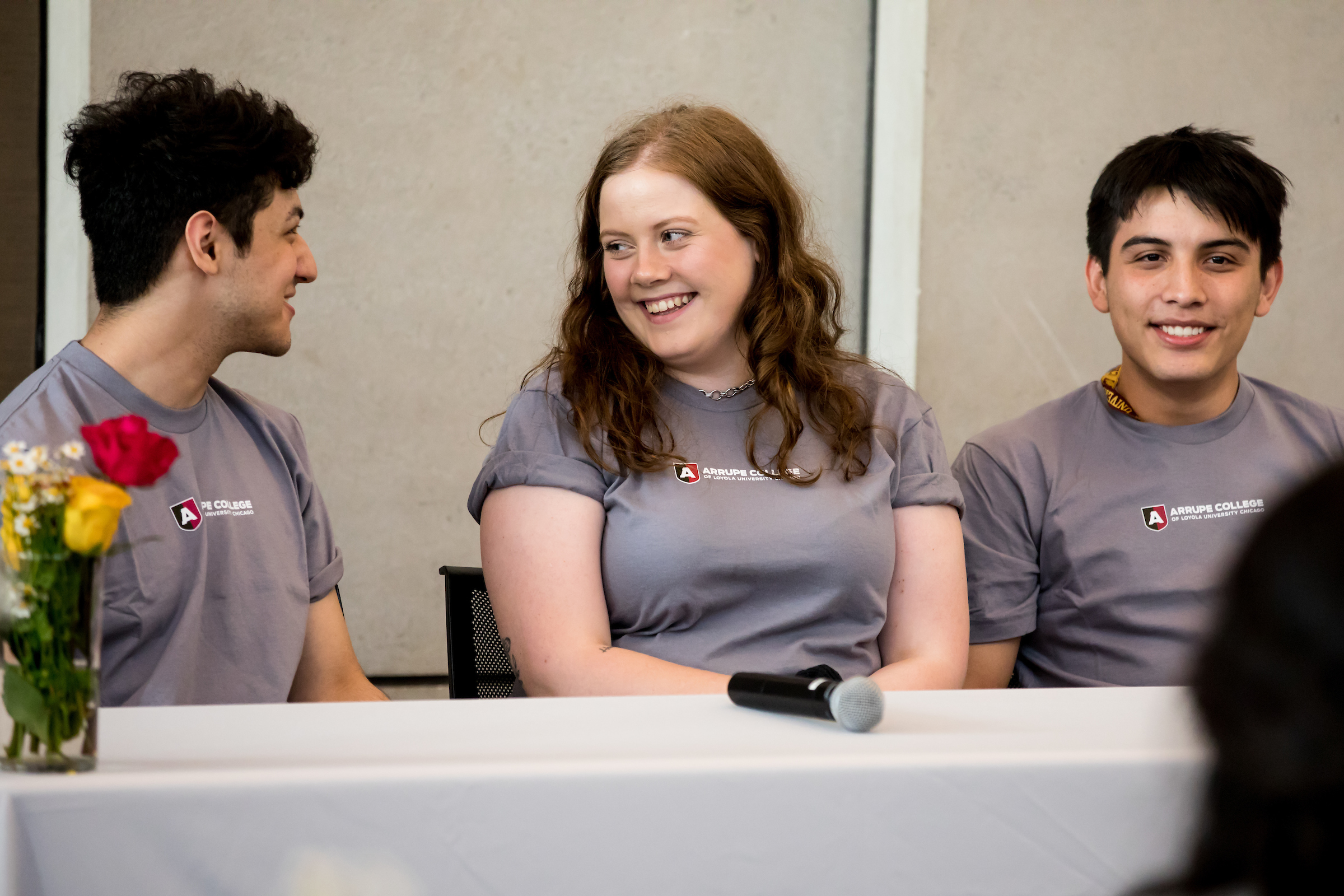You have /5 articles left.
Sign up for a free account or log in.

Arrupe College
A few years ago, the superior general of the Society of Jesus traveled from Rome to visit with the presidents and board chairs of the Jesuit colleges in the United States.
While the Jesuit leader was congratulatory, he also told the colleges that they were becoming less affordable and accessible and therefore leaving people behind, according to Father Steve Katsouros, S.J., then an associate dean at the University of San Francisco.
It was one of the moments that would lead to the creation of Arrupe College, a two-year program run through Loyola University Chicago that combines financial assistance and wraparound supports to help students who wouldn't otherwise have access to Jesuit education. So far, it enrolls about 350 students.
Katsouros moved to Chicago in 2014 to start building Arrupe. After graduation this summer, he will begin spreading the model elsewhere.
"As time went on, I thought, what’s the greater good?" Katsouros said. "My superior encouraged me to think, maybe your greater good is to be the replicator and assist others."
The Arrupe model seems to be working. The average two-year graduation rate is 51 percent, nearly 89 percent of graduates matriculate at four-year colleges and about half of Arrupe graduates complete a bachelor's degree in four years.
These numbers are remarkable when compared with the local public two-year options, the City Colleges of Chicago, which announced a record three-year graduation rate of 22.9 percent last year, as well as the national average six-year graduation rate of 39 percent for community colleges.
The reasons for the college's success are manifold, Katsouros said. All students participate in interviews for enrollment. Once enrolled, they go through an orientation that includes a residential experience. The college provides breakfast and lunch every day. The faculty are trained to be academic advisers, with small caseloads of about 25. There are two social workers, along with interns, available to students, as well as a transfer counselor, graduate support coordinator and career services director.
"All of these wraparound support services help our students get to the finish line," Katsouros said. The model is estimated to incur about $500,000 for facility space and additional services, while relying on the host institution for the business side, including marketing, finance and IT. Arrupe uses federal and state aid and fundraising to support itself.
While Loyola is admitting underserved students (about 75 percent of its students receive the federal Pell Grant), Arrupe serves students who may have struggled but who show potential, according to Margaret Callahan, acting provost and chief academic officer at Loyola.
It's not open admissions, though. The acceptance rate was 78 percent for the 2015 cohort, but it has dropped each year and was 45 percent for the 2018 cohort. Students must show financial need, have strong recommendations from their high schools and complete the entrance interview to be admitted.
"Arrupe is serving a population, though, that has oftentimes struggled in high school, but yet their counselors and teachers make the statement that, with the right support, students could make it at Loyola," Callahan said.
 While Josh Wyner, vice president of the Aspen Institute, said he didn't know much about Arrupe College, he supports experimentation with new models for community colleges.
While Josh Wyner, vice president of the Aspen Institute, said he didn't know much about Arrupe College, he supports experimentation with new models for community colleges.
"I think absolutely virtually every institution can do a better job with the students they have, but that doesn’t mean that tinkering with the current model is going to be enough," Wyner said. "We’ve got to redesign from end to end."
Several private religious institutions have been experimenting with two-year programs, like Yeshiva University and Dordt College, as a way to provide more vocational programs in a religious setting, or to open up access to students who can't swallow the price tag of the host institution.
Some could think that the creation of Arrupe College was an enrollment strategy for Loyola, but Katsouros said Arrupe's students go on to several different colleges, especially public state colleges.
Karen Stout, president and CEO of Achieving the Dream, also supports testing out new models.
"It reflects that we have, as a country, a large challenge to get more first-generation, students of color and low-income students into the education pipeline," she said. "My question would be, what needs to happen for this to scale?"
Katsouros commissioned a replication feasibility study for this purpose. Accenture, the firm that completed the study, concluded that Arrupe's model "has the power to transform the education landscape at a time when higher education in the United States is at an inflection point."
To be considered a fit for this model, according to Katsouros, colleges will have to be committed to social justice, have a national reputation, be situated in an urban setting with a large population of 18-year-olds eligible for the Pell Grant, be in an area lacking "high-performing two-year programs" and have strong fundraising abilities, among other things. It's open to colleges that aren't Jesuit or Catholic, as well.
Several presidents are already interested in the model, Katsouros said, though he couldn't yet name any publicly. When he finds a college that will work, Katsouros plans to be on site a few days per month and available at other times virtually. He plans to organize the various stakeholders and help the college determine if there is a need for the model.
"If it's anything like here, the response is going to be an overwhelming, 'Are you kidding, of course,'" he said.
But why not look to the public colleges for this work? Father John Cecero, provincial of the U.S.A. Northeast Province for the Jesuits, said Jesuit education is different from what students could get in a public college.
"The brand of Jesuit education is a values-oriented education, so it’s rooted in the notion that education is for the sake of service, it’s not primarily for the sake of profit," Cecero said. "That’s not to say that we don’t encourage graduates to make good salaries, but we use the motto 'educating men and women for others.'"
That focus, along with a more spiritual bent, is what sets Jesuit education apart from others.
Cecero is hopeful that the model will be successful elsewhere, given the initial success of the pilot at Loyola.
"I think it’s so consistent with the Jesuit mission that has been recently re-emphasized in our universal apostolic preferences, which is to reach out to people on the peripheries and to accompany them," he said. "It’s really at the core of our mission and our commitment to social justice."




